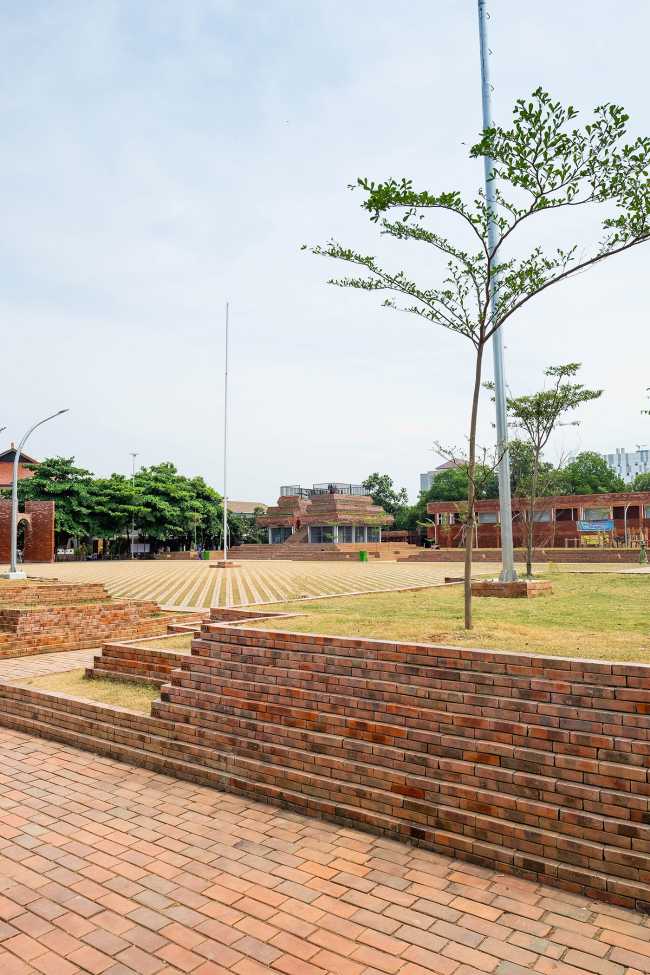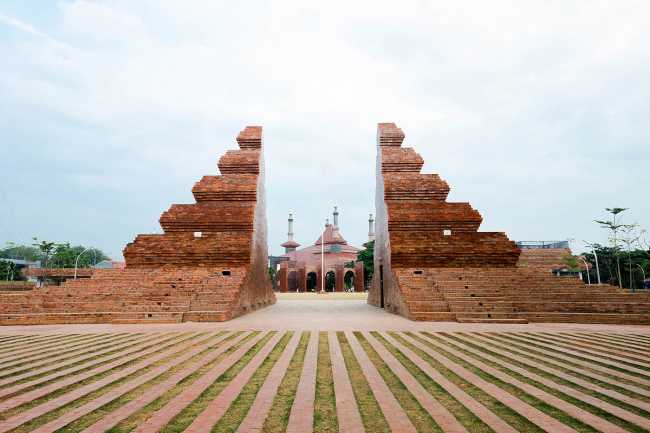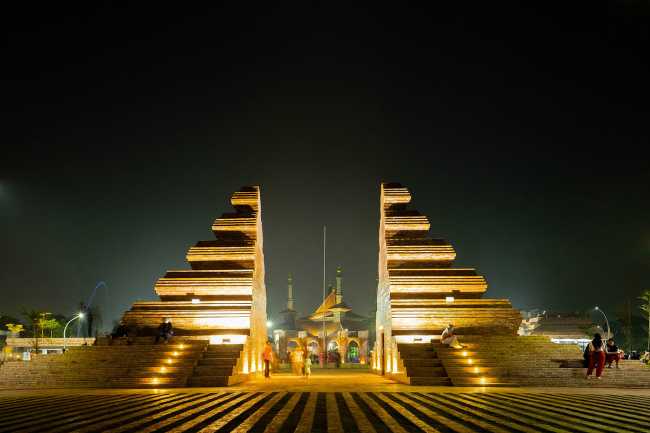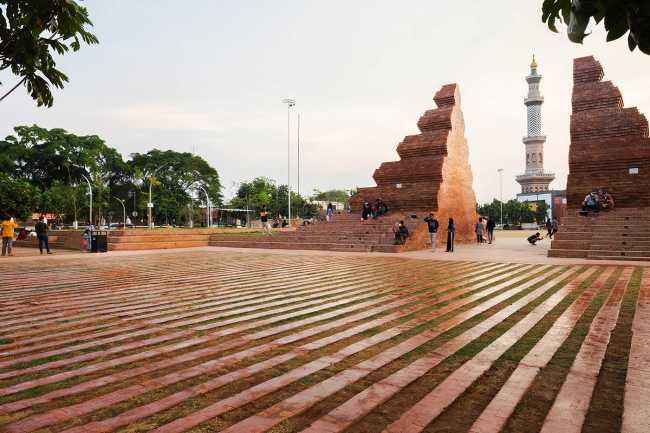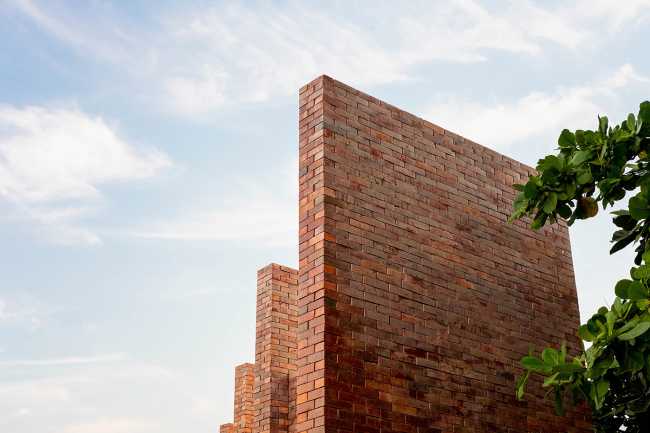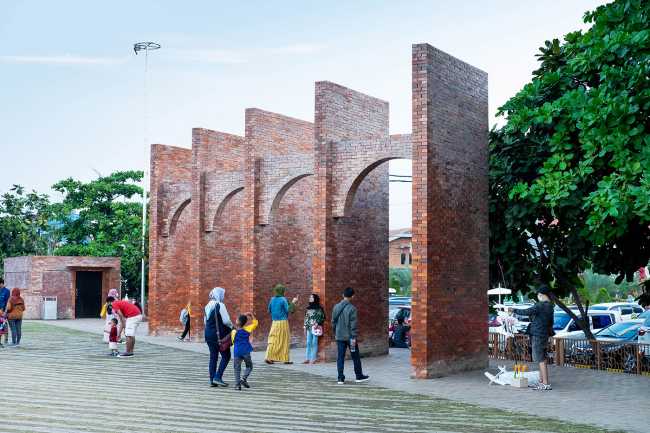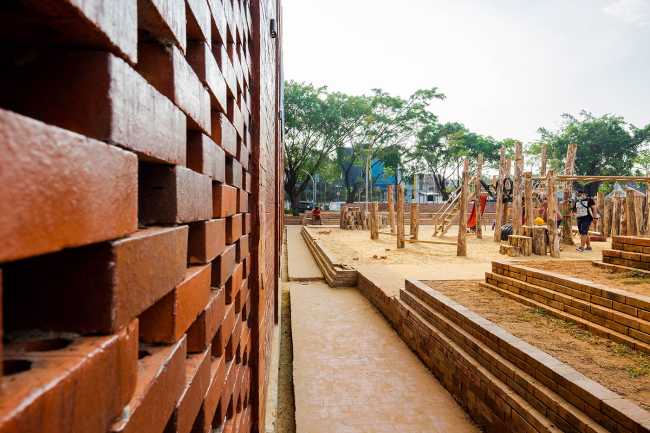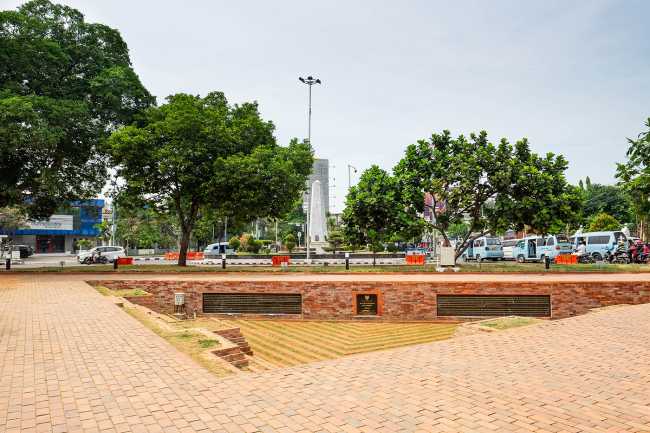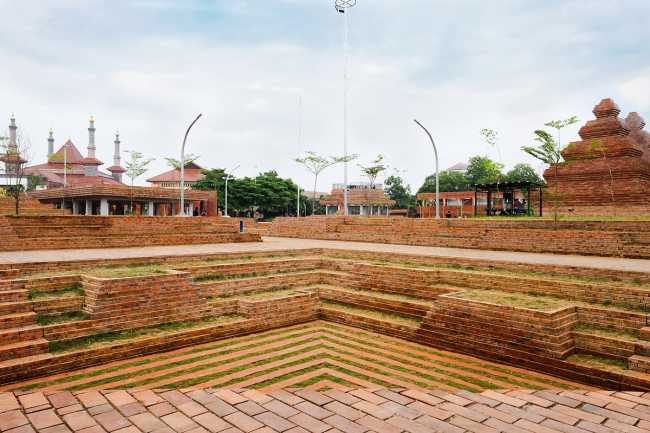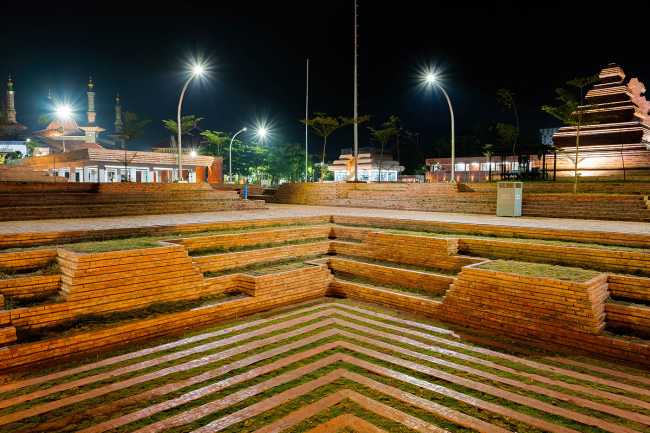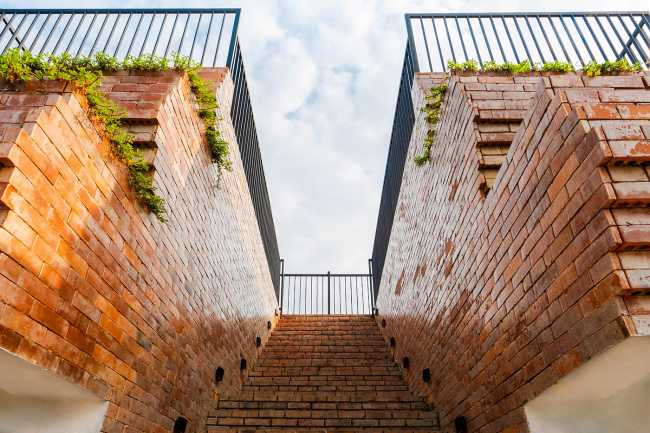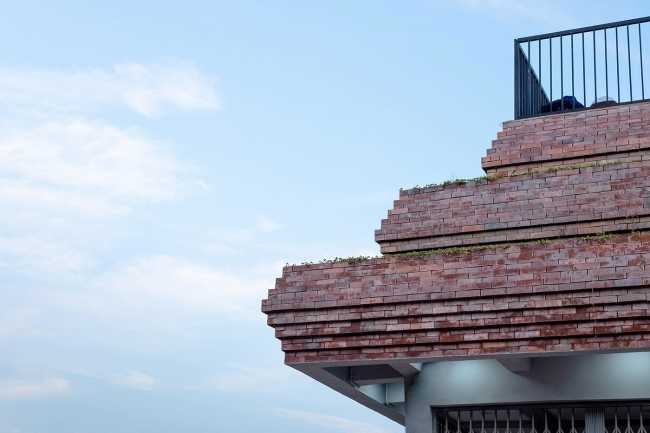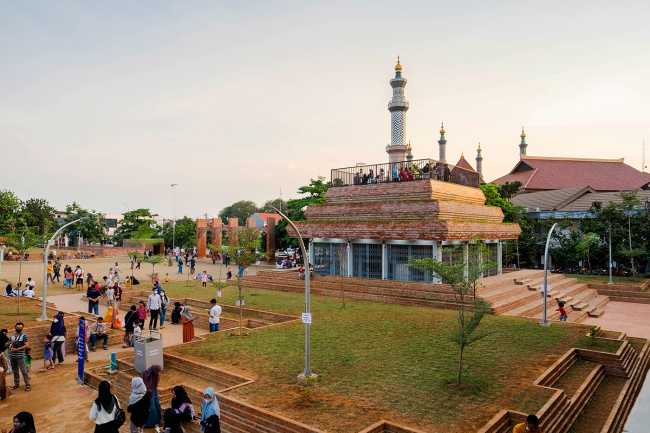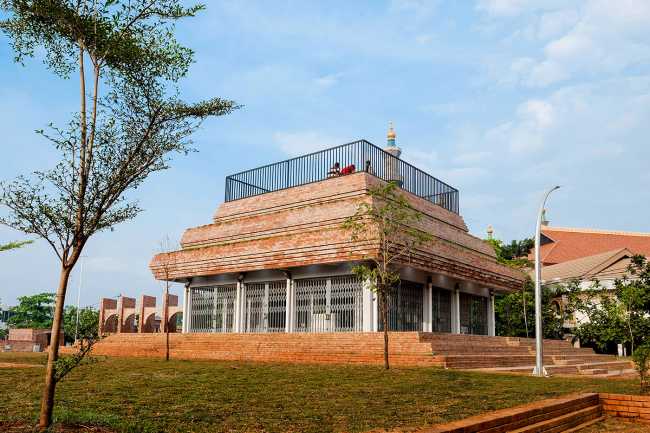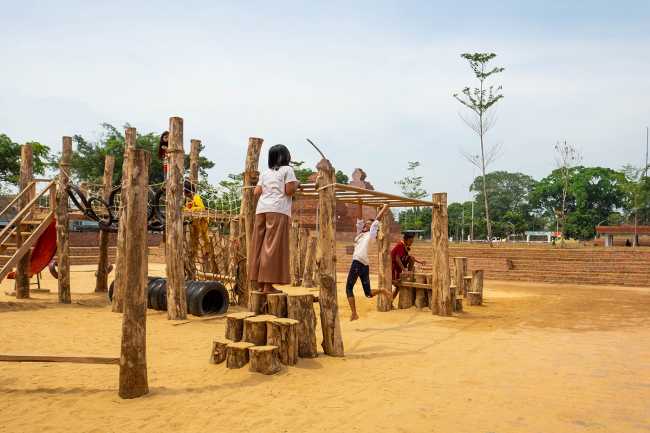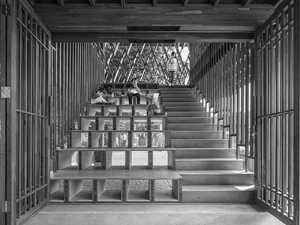The outdoor project, commissioned by the governor of West Java from the firm SHAU Indonesia, brings together the wishes of the various buildings facing the square: the desire for a prayer area for the mosque, a public space for the municipality and citizens to gather in the center of the city, and the reinstatement of an obelisk-shaped historic monument
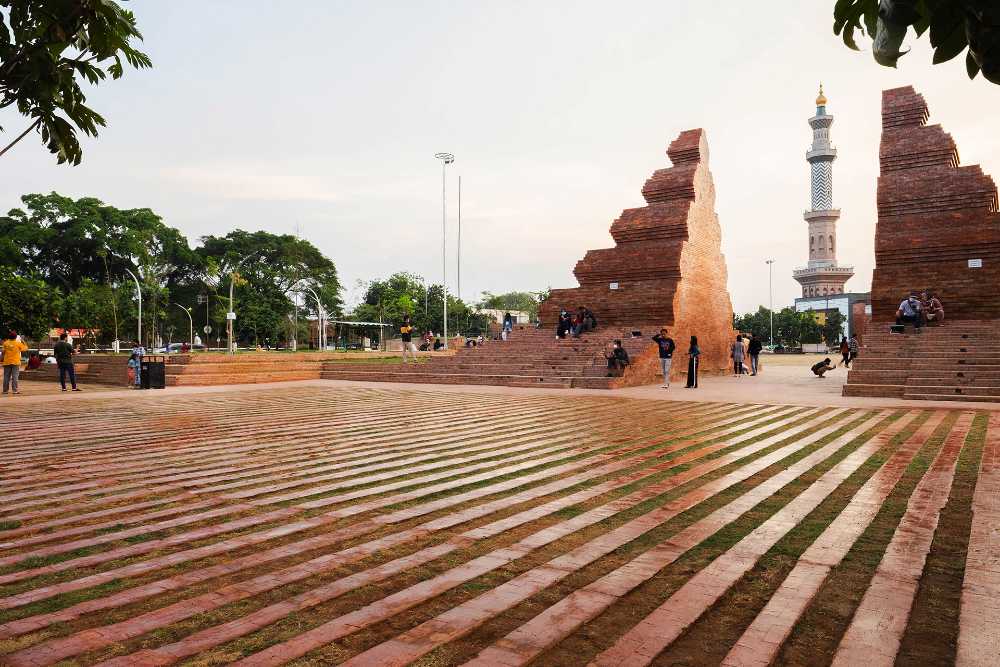

Alun-alun Kejaksan Square: a gathering place between worldly and spiritual needs
Alun-alun Kejaksan is a 1.2 hectare open-air square located in the Indonesian, multicultural city of Cirebon: its area encloses a palace, a government center, a mosque, and a marketplace
- #Asia
- #Indonesia
- #Architectures
- #New construction
- #Outdoor
- #Urban areas
- #Brick
- #Outdoor
- #Architectures
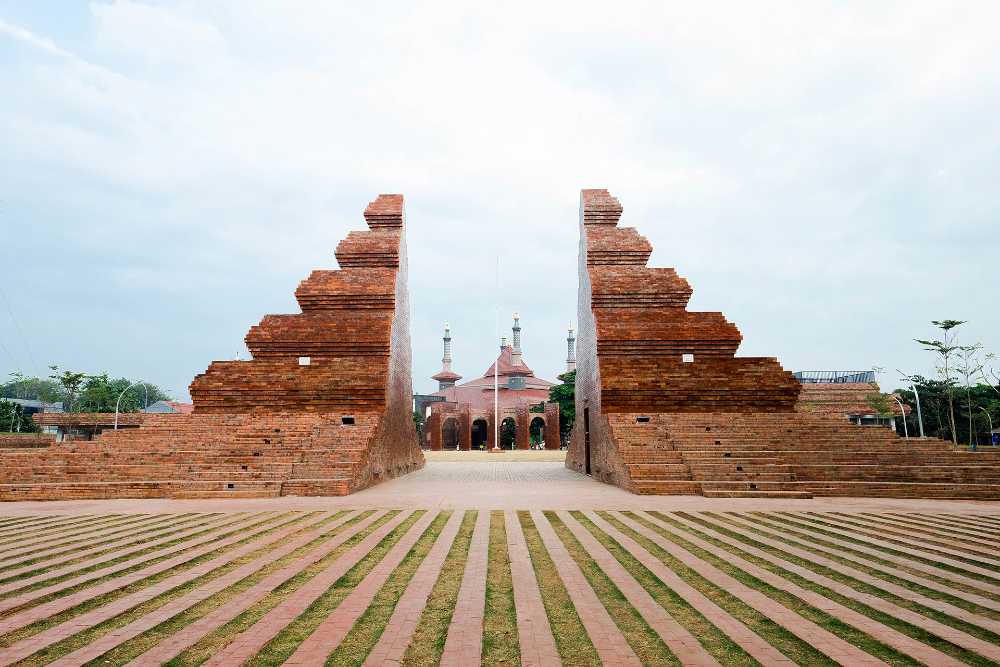
Having previously designed public space projects in Indonesia organized by municipalities and executed through a public procurement process, SHAU designs a central main square next to the mosque that can be used for spiritual ceremonies or even national gatherings and events. All other functions such as a bus stop, shelter, memorial plaza, hawker center, playground, and micro-library are loosely clustered around the perimeter
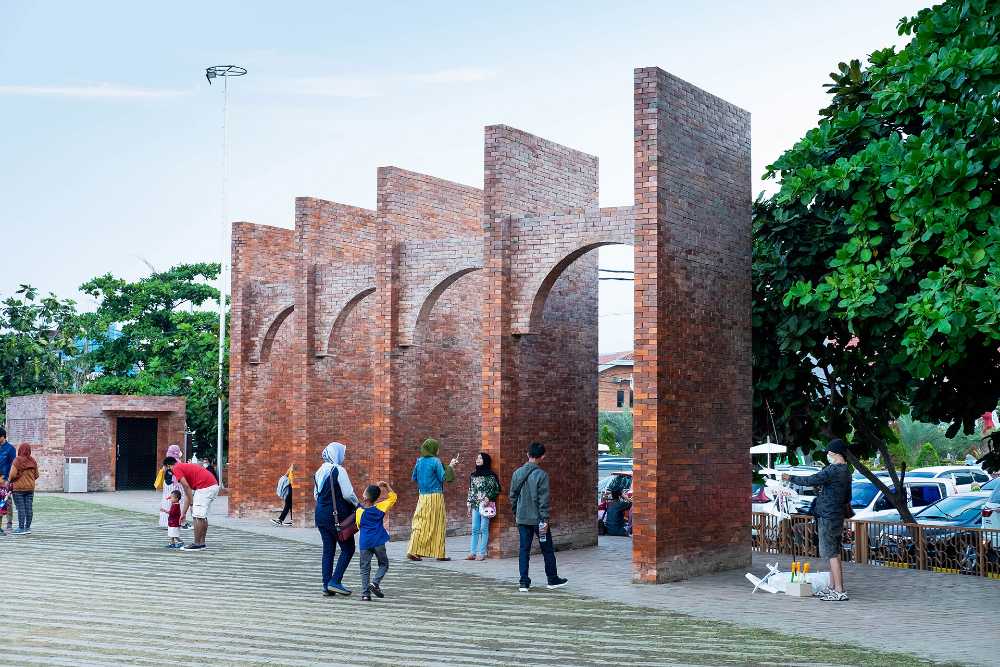
The goals also included maximizing green areas in order to improve the micro-climate, rainwater management in the form of a stepped planter landscape which structures all functions, circulation and intermediate spaces. An iconic Gapura marking the entrance from the city was installed on one side of Alun-alun and a five-pillar gate marking the entrance from the At-Taqwa Mosque was installed on the opposite side. Both opposing gates represent a dialogue between worldly and spiritual needs, emphasizing an open dialogue with the intermediate plaza as a gathering place
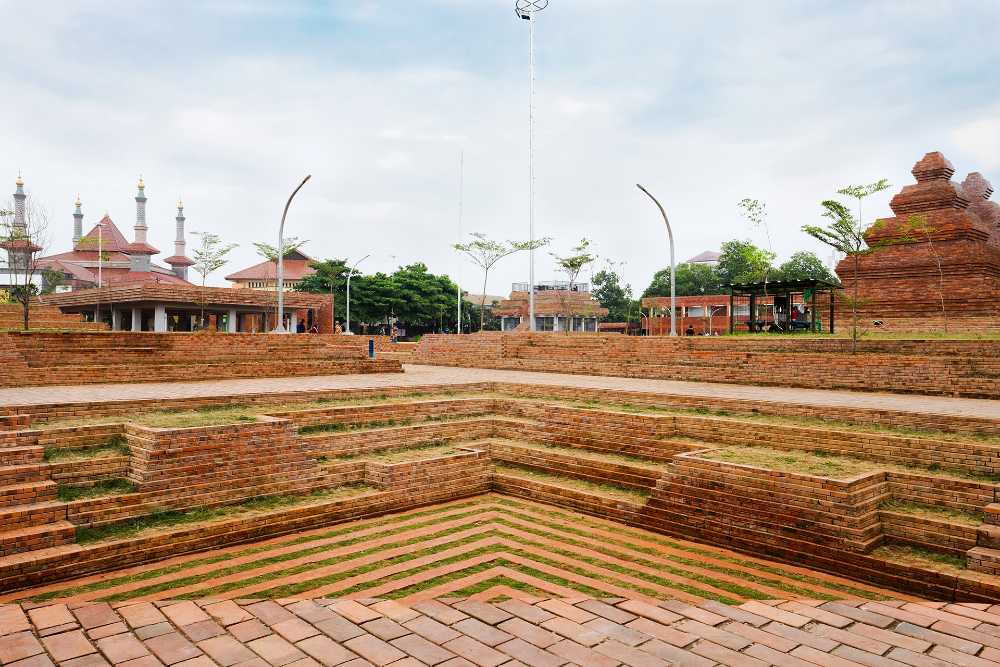
Both materials and geometry refer to traditional elements that are reinterpreted in the topography of the planter, the shelter and to the micro-library in a transformative way in which each element derives from the same material, language and construction logic. By choosing brick as the main material for Alun-alun Kejaksan, he not only refers to the historical places of Cirebon, but also adheres to practical aspects such as the availability and stimulation of the local economy, while using a contemporary design language
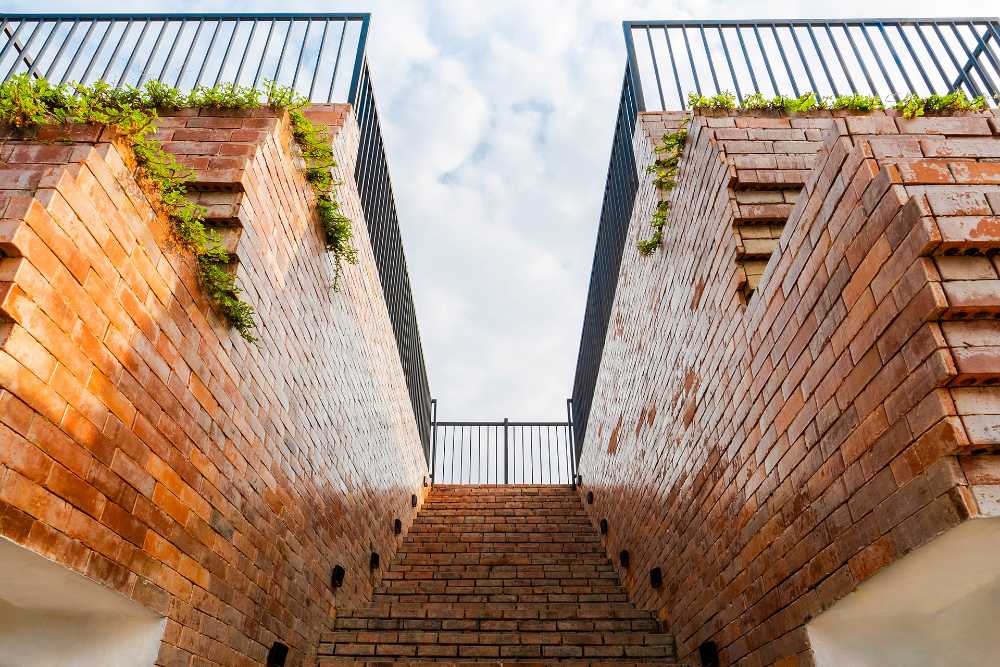
Gallery
Photo credits
Top image, content and gallery images: Kemala Montesa

